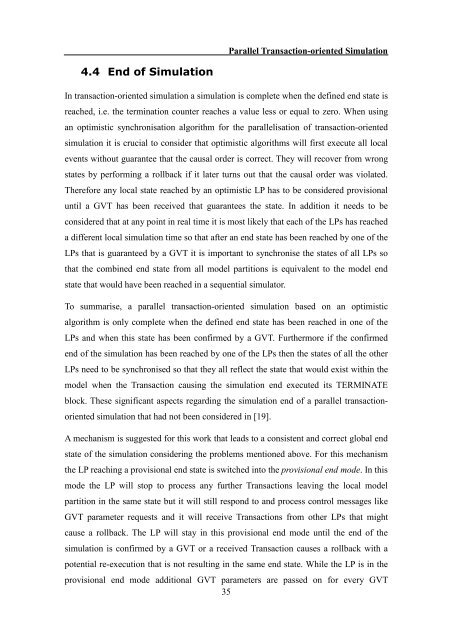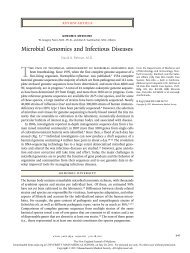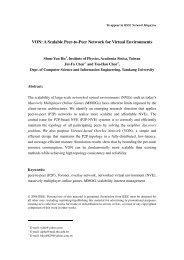3.1 MB - Evernote
3.1 MB - Evernote
3.1 MB - Evernote
Create successful ePaper yourself
Turn your PDF publications into a flip-book with our unique Google optimized e-Paper software.
4.4 End of Simulation<br />
Parallel Transaction-oriented Simulation<br />
In transaction-oriented simulation a simulation is complete when the defined end state is<br />
reached, i.e. the termination counter reaches a value less or equal to zero. When using<br />
an optimistic synchronisation algorithm for the parallelisation of transaction-oriented<br />
simulation it is crucial to consider that optimistic algorithms will first execute all local<br />
events without guarantee that the causal order is correct. They will recover from wrong<br />
states by performing a rollback if it later turns out that the causal order was violated.<br />
Therefore any local state reached by an optimistic LP has to be considered provisional<br />
until a GVT has been received that guarantees the state. In addition it needs to be<br />
considered that at any point in real time it is most likely that each of the LPs has reached<br />
a different local simulation time so that after an end state has been reached by one of the<br />
LPs that is guaranteed by a GVT it is important to synchronise the states of all LPs so<br />
that the combined end state from all model partitions is equivalent to the model end<br />
state that would have been reached in a sequential simulator.<br />
To summarise, a parallel transaction-oriented simulation based on an optimistic<br />
algorithm is only complete when the defined end state has been reached in one of the<br />
LPs and when this state has been confirmed by a GVT. Furthermore if the confirmed<br />
end of the simulation has been reached by one of the LPs then the states of all the other<br />
LPs need to be synchronised so that they all reflect the state that would exist within the<br />
model when the Transaction causing the simulation end executed its TERMINATE<br />
block. These significant aspects regarding the simulation end of a parallel transaction-<br />
oriented simulation that had not been considered in [19].<br />
A mechanism is suggested for this work that leads to a consistent and correct global end<br />
state of the simulation considering the problems mentioned above. For this mechanism<br />
the LP reaching a provisional end state is switched into the provisional end mode. In this<br />
mode the LP will stop to process any further Transactions leaving the local model<br />
partition in the same state but it will still respond to and process control messages like<br />
GVT parameter requests and it will receive Transactions from other LPs that might<br />
cause a rollback. The LP will stay in this provisional end mode until the end of the<br />
simulation is confirmed by a GVT or a received Transaction causes a rollback with a<br />
potential re-execution that is not resulting in the same end state. While the LP is in the<br />
provisional end mode additional GVT parameters are passed on for every GVT<br />
35
















